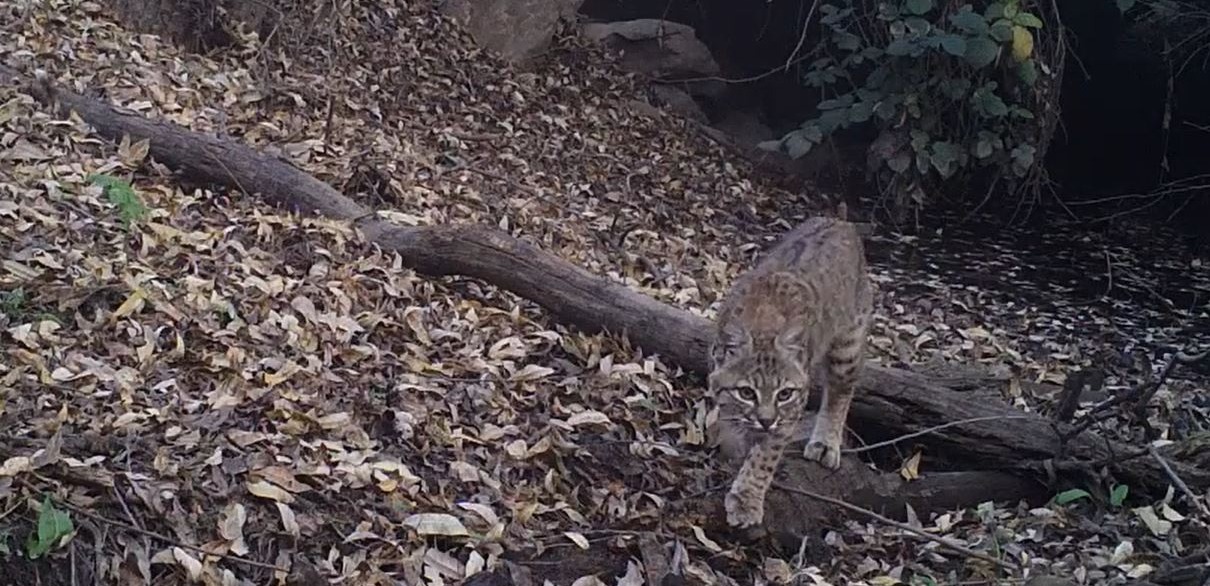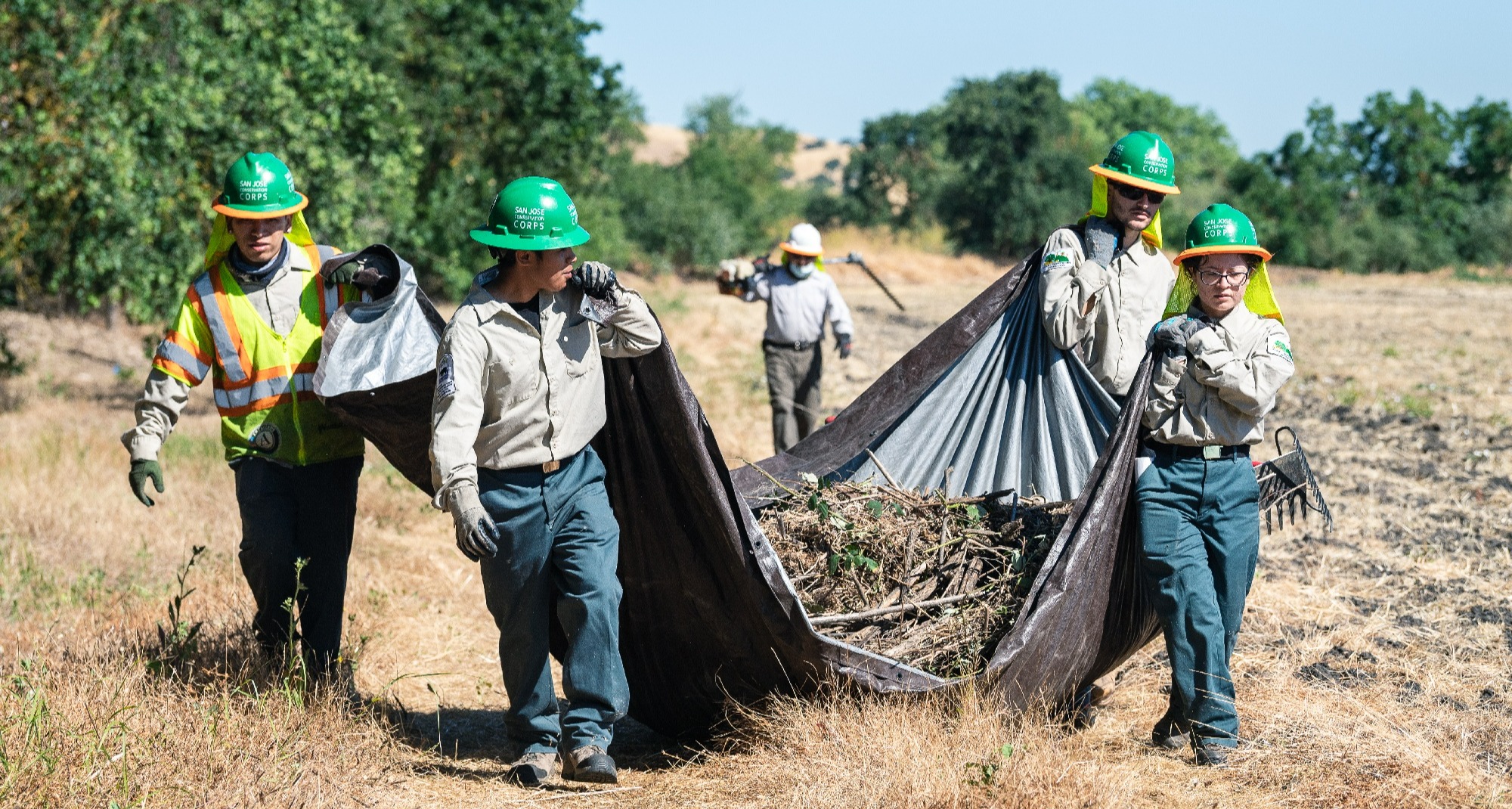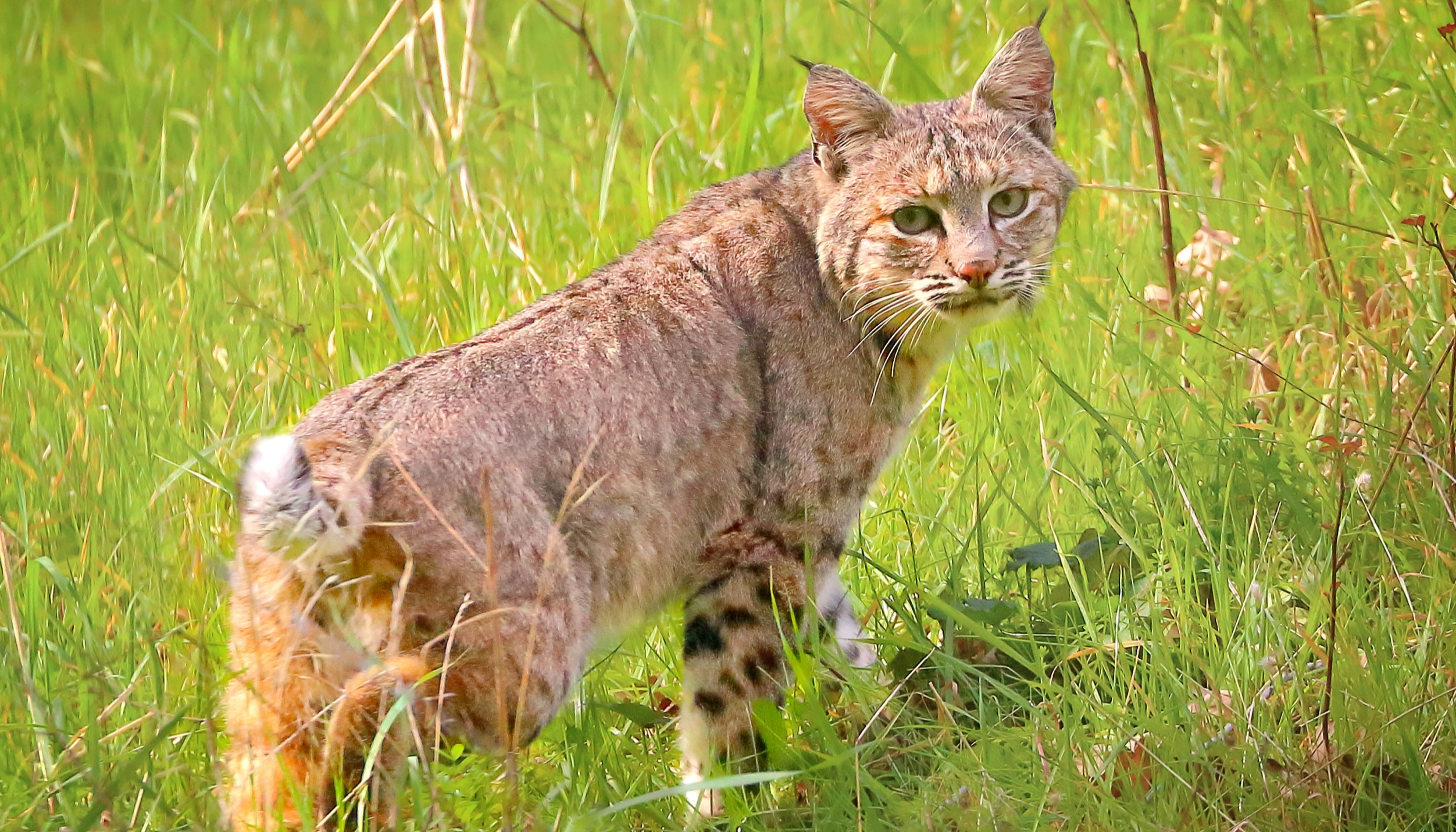Open Space Authority Awarded $247K for Critical Habitat Restoration Work
July is Wild about Wildlife Month, and the Santa Clara Valley Open Space Authority is highlighting its important work to conserve and restore critical wildlife habitat in Coyote Valley. A particular area of focus is Fisher Creek on the west side of the valley. At this location, wildlife travels between over one million acres of habitat in the Santa Cruz Mountains and the Diablo Range, seeking the cover of plants and trees in the riparian corridors as they move across Coyote Valley.

Bobcat traveling through dry Fisher Creek
One of the biggest threats to local bobcat and mountain lion populations in the Santa Clara Valley is loss of habitat, hence the need to protect connected natural areas (undeveloped land) and working lands. In addition to providing better connectivity for these species, restoring Fisher Creek will also support the viability of a variety of other species like monarch butterflies and birds. Restoring the local watershed will also benefit people by improving climate adaptation and resilience for nearby urban communities, enhancing the water quality of the creek, and helping to reduce flood risks for those who live downstream.
To assist in these restoration efforts, the National Fish and Wildlife Foundation (NFWF) and the California Department of Fish and Wildlife, Office of Spill Prevention and Response (CDFW-OSPR) recently awarded the Open Space Authority $247,000 in May of 2022.
“Projects such as Fisher Creek will make a real difference for the future of wildlife and important habitat, and we look forward to seeing the continued progress in Coyote Valley,” said Jeff Trandahl, Executive Director and Chief Executive Officer of NFWF.

Fisher Creek, looking north
This funding will support the biodiversity and the ecological health of the corridor, maximize its benefits to local wildlife populations, and contribute to the Open Space Authority’s Coyote Valley Conservation Area Master Plan efforts.
“We’re pleased to support environmental restoration along Fisher Creek through this funding,” said Dr. Michael Anderson, Resource Restoration Manager for CDFW-OSPR. “It’s essential to work together and fund restoration projects like this one that address flood risks, human use, and habitat enhancements.”
When the Open Space Authority first began managing the adjacent Fisher’s Bend property, Fisher Creek was neglected and overrun with trash and tires. The first phase of the project – funded by the Regional Water Quality Control Board -- kicked off in 2019 to prepare the area for restoration.
The Open Space Authority, San Jose Conservation Corps, Go Native, and Point Blue Conservation Science removed hundreds of pounds of trash and invasive species along the corridor and installed irrigation and native plants along the creek. Point Blue used climate modeling software to identify a list of native plants that could best adapt to climate change over time and support resident wildlife species.

San Jose Conservation Corps removed hundreds of pounds of trash and invasive species along the Fisher Creek corridor (Teddy Miller)
Point Blue’s Students and Teachers Restoring A Watershed (STRAW) program hosted local elementary school children in a series of planting days, giving students the opportunity to learn about nature while contributing to the restoration effort. Point Blue and the Open Space Authority lead three planting days, hosting a total of 70 second graders, and planted an array of native plants along the creek.

Point Blue’s Students and Teachers Restoring A Watershed (STRAW) program hosted local elementary school children in a series of planting days at Fisher's Bend (David Mauk)
“The next phase of restoration work builds upon what we’ve already accomplished during the first phase of the project," said Galli Basson, Resource Management Program Manager. "This will increase the habitat value of both phases of this important restoration project.”
For more information about the Open Space Authority’s ongoing efforts to protect and restore the Coyote Valley for water, wildlife, agriculture, and people, visit www.openspaceauthority.org/cvcamp.
The views and conclusions contained in this document are those of the authors and should not be interpreted as representing the opinions, views, or policies of the National Fish and Wildlife Foundation and the California Department of Fish and Wildlife, Office of Spill Prevention and Response. Nothing contained herein constitutes an endorsement in any respect by the National Fish and Wildlife Foundation or the California Department of Fish and Wildlife, Office of Spill Prevention and Response.

